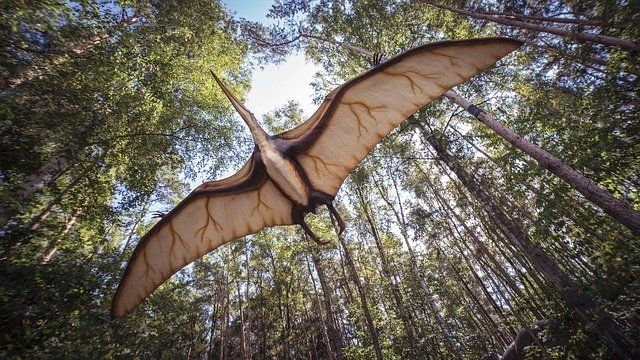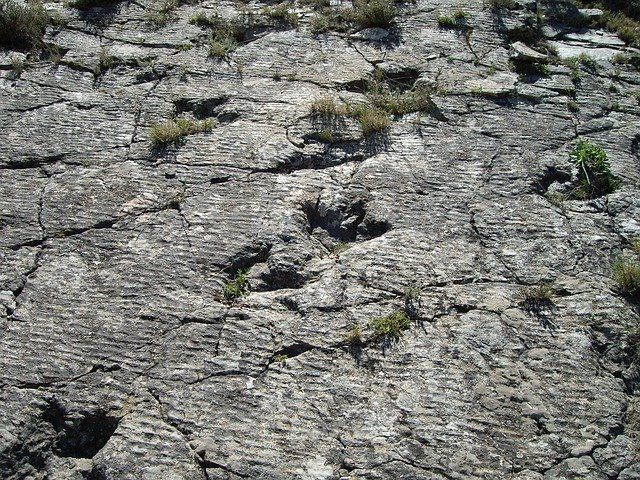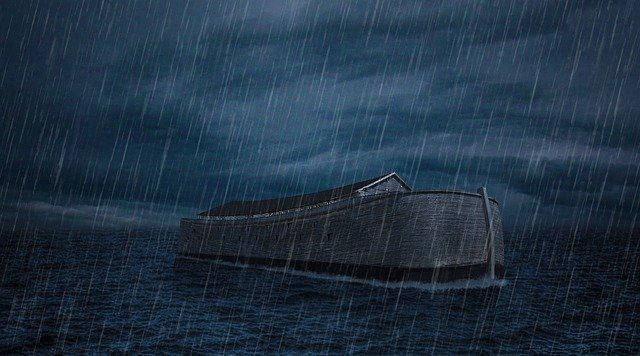
For as long as I can remember, the Natural History Museum in London has displayed the massive skeleton of a Diplodocus dinosaur as the central exhibit in its imposing entrance hall. It sums up our fascination with these giants of the past.
We buy books about dinosaurs in large quantities, while children immerse themselves in dinosaur imagery and learn all their names. Recently, the film Jurassic Park has given people of all ages an appetite for visual images.
Jurassic Park was, of course, science fiction. It did not really matter if the re-created animals were ‘larger than life’. After all, it was part of the plot that the re-created animals differed genetically from their ancestors. We were free to speculate how closely the reconstructions approached reality. Because the film made no claims about authenticity, this could hardly be a point of criticism.
BBC series
The BBC’s Walking with Dinosaurs presents us with a different situation, however. The launch of the television series captured nearly nineteen million viewers. It was produced by the BBC Science Department, costing six million pounds and taking three years to complete.

The programmes set out to introduce us to the lifestyles, behaviour, ecology and origins of dinosaurs. This was announced, without any qualification, in the commentary accompanying the first ‘chapter’ of the story: ‘We will show you how they lived’, they declared. In this series, we will ‘discover where dinosaurs came from’.
The book of the series adds: ‘This is a natural history of some of the most extraordinary creatures that have ever lived on Earth’ (p.17). These are bold claims, as anyone familiar with the technical literature on dinosaurs will know.
Mingling fact and fiction
Henry Gee, a senior editor of the journal Nature, pointed out that the standards we expect from a wildlife programme are quite different from those applicable to a science-fiction film. ‘Viewers should have the right to expect that everything is true; or, if it isn’t, they should be able to tell fact from fiction. This is not the case with Walking with dinosaurs’ (Nature, 7 October 1999, 401, 530).
It does appear that science has been compromised in the name of entertainment. Innumerable people have accepted the series as another natural history production. The images appeared very real. One viewer was overheard to say, ‘I didn’t know any of them were still about!’
Most of the criticisms I have heard relate to the details of dinosaur reconstruction and behaviour. But this is the least of my concerns. I intend, rather, to focus on the general context of the series, with its assumption of evolutionary origins and its portrayal of stable living environments.

Evolutionary origins
The BBC series sets dinosaurs in the context of the theory of evolution. Nowhere does it attempt to defend its claim that dinosaurs, pterosaurs, marine reptiles and birds evolved, and that they developed their specialised adaptations by evolutionary processes.
The truth, however, is that there is an almost total lack of data in the fossil record about dinosaur origins. When they first appear, they are already specialised. If we are so unsure about their ancestry, how can we be so sure they evolved in the first place?
Most serious books on this subject acknowledge that all discussions regarding the origins of these animals are speculative. For the BBC to make assertions of fact about dinosaur origins, therefore, creates a fundamental problem for anyone interested in truth. This is especially true for biblical creationists, who understand that the origin of the dinosaurs, along with all other animals, necessarily involves the purposeful design and creative power of the Living God.
Dinosaur lifestyles
Although the series presented a wide range of environments in which these animals lived, all of these were relatively stable. The dinosaurs were shown living in mature eco-systems. Modern-day analogues were found in the monkey puzzle forests of Chile and New Caledonia, the redwoods of California, and the tree fern and podocarp forests of New Zealand.

These environments are portrayed as enduring for thousands, and probably millions, of years. This again creates problems for biblical creationists, who seek to understand all history within time-scales consistent with biblical revelation.
Where does the idea come from that dinosaurs lived in stable ecosystems? Does it come from the rocks containing dinosaur fossils? The answer to that question is, in my opinion, a resounding ‘No!’
Most of these rocks carry a message of trauma and violence, catastrophe and crisis. Evidence from dinosaur nests supports this belief, the nests often being buried by thick deposits of sand. Numerous sites exist where large numbers of dinosaur eggs have been fragmented and scattered before becoming fossilised.
Making tracks
The best European sites for dinosaur footprints (‘trackways’) are found in the Rioja region of Spain. The rocks containing these trackways suggest vast expanses of mudflats close to sea level, with sediment-laden water flooding the flats at regular intervals. Although the BBC series shows dinosaurs making tracks on mudflats, there are cliffs and mature environments only a short distance away.

This is in total conflict with the Spanish scenario, where the tracks were made on extensive salt flats in a geologically unstable and unfamiliar world (see Michael Garton’s ‘The real lifestyle of the dinosaurs’ Origins, 24, 14-22, Biblical Creation Society 1998). In the UK, dinosaur tracks are found in several places, like the Isle of Purbeck and the Yorkshire coast. In both these areas, it is hard to find any evidence in the rocks for mature environments. Instead, crisis, trauma and instability characterise the deposits.
The Spanish and UK examples illustrate a general point. The rock strata as we find them today do not bear witness to the passage of millions of years. But evolutionists stretch timescales artificially by assuming either that long ages elapsed between the deposition of successive sedimentary beds, or that some strata were eroded before being covered by fresh deposits.
Biblical history
Dinosaurs were creatures made by God. Genesis 1:24-25 inform us that he made all the wild animals, the livestock and everything else that moves on the face of the earth. These animals were part of the antediluvian world and dinosaurs, representing various created kinds, would have been on the ark. As far as the giants were concerned, we can gain some under-standing about why God chose to create them from Job 38-41, particularly the references to Behemoth in 40: 15-24. These animals that man had no hope of subduing are presented as ‘first among the works of God’. Diplodocus and Tyrannosaurus rex evoke similar reactions today!

The Bible records an unprecedented destruction affecting the whole earth in the time of Noah, which put an end to the antediluvian age. That age had produced such fruits of unrighteousness that God was grieved that he had made man (Genesis 6:6-7). The destruction he poured out upon the earth was devastating and total, and the world bears its marks to this day.
Dinosaurs’ place in history
Many creationists have interpreted dinosaur fossils in terms of their perishing in the Flood. They argue that the tracks we find today were made by animals fleeing from rising flood water.
However, this interpretation has not stood up to scrutiny, and a much better way to make sense of the data is to understand that dinosaurs lived for a long period after the Flood.
The world was being repopulated and the dinosaurs were among the creatures colonising the land. They bred quickly, could travel long distances with relative ease, and were able to survive in an unstable world recovering from catastrophe.
This revised understanding of the dinosaurs is exciting for those of us who are fascinated by these remarkable animals. It allows us to make much more sense of the biological and geological data. Furthermore, these ideas support a wider picture of global recolonisation, which is what the fossil record really portrays (rather than being a record of evolutionary transformation).
Locked into a false view
So while the BBC series has broken new ground in terms of visualising these remarkable animals, it suffers from a serious problem. It is locked into a false view of the history of the earth, a view that has been constructed according to evolutionary theories and assumptions.
The major areas of controversy are usually hidden from the general public. Opinions are assumed, adopted and asserted without being questioned or tested by the often ‘inconvenient’ facts. Christians who take an interest in dinosaurs, and are concerned about Genesis as history, will want to address these hidden areas.
The issues are much broader than just ‘dinosaurs’. They affect the whole way we look at the past, our origins and, most fundamentally, our relationship with our Maker.







